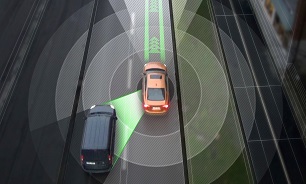Two Australian companies helping drive the global autonomous revolution
Holden might have officially shut the door on locally-built cars with the Elizabeth Plant closure, but Australia is still playing a role in shaping the cars of the future.

Khodrocar - As self-driving technology continues to advance, a number of small Australian companies have attracted the attention of big manufacturers by being the best in their field, be it vision or connected vehicle technology.
Here are two Australian companies shaping the autonomous vehicles of the future with their knowledge.
Founded in 2004 by research scientists from the University of South Australia, Cohda Wireless specialises in developing modules for ‘vehicle-to-everything’ or ‘V2X’ communications – a catch-all term encompassing technologies used in vehicle-to-vehicle (V2V) and vehicle-to-infrastructure (V2I) projects, enabling all connected systems to manage and alert each other to traffic conditions.
"Today we’re 54 people… most of them at our headquarters here in Adelaide,” Paul Gray, CEO of Cohda told CarAdvice.
"Our prime market we’ve been focused on to date has been connected vehicles, so this is really connecting vehicles to each other and smart infrastructure. So your vehicle-to-vehicle communication, vehicle-to-infrastructure communications, vehicle-to-people communications, which people tend to lump together under vehicle-to-everything or V2X communications.
"We’ve got some good design width there… our software is now in production in the CTS Cadillac in the US.”
The company conducted its first V2X trials in 2006, and the technology is now into its fifth generation. Cohda modules have been subjected to more than 18,000 kilometres of in-house testing since the company was founded, and thousands of kilometres in third-party trials.
The Adelaide outfit holds more than 20 patents in the V2X field, with a further 50 pending around the world. All its applications have been approved, compared to an average 50 percent approval rate from the US Patent Office.
Recently, however, the company has shifted its focus to connected autonomous vehicles, or CAVs.
"What we focus on there [in CAVs] is the connectivity side of autonomous vehicles. Again, connecting autonomous vehicles to each other and to smart city infrastructure, to improve performance and to lower costs,” Gray said.
Connectedness is critical to driving autonomy, and promises a raft of benefits. Having your autonomous vehicle connected to infrastructure like traffic lights will allow cars to know how long a light will be green, allowing the car to pre-emptively manage its speed to keep moving. Sounds minor, but every little bit helps to keep traffic flowing.
On the highway, inter-vehicle communication allows "cooperative adaptive cruise control”, something currently being put to the test in the real world.
"This is something that’s already getting deployed in projects, but more in autonomous heavy vehicles,” Gray said. "So things like what they call ‘truck platooning’, where they can have trucks following at close distances behind each other – essentially slipstreaming behind each other – and that can get significant fuel savings.
"But of course, now following distances are so short, you actually need to have this highly reliable communications between the vehicles so they know exactly what the vehicle in front is doing.”
In Europe, the Truck Platooning Challenge saw six manufacturers send their self-driving semis from their respective headquarters to Rotterdam. When running in platoon mode, the trucks travelled just 15 metres apart, helping slice fuel economy by around 10 per cent during the journey.
Daimler also says its vehicles have a braking reaction time of less than 0.1 seconds – impressive when compared to the 1.4 seconds it generally takes a human to hit the brakes in an emergency.
Connected vehicle systems from Cohda have featured in Jaguar Land Rover off-road autonomous vehicles, and the company has been involved in testing V-to-infrastructure communications over 4G with Telstra.
Source: CarAdvice
Latest News


